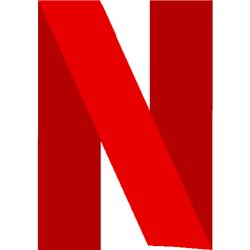Fast Workflow
Apply any valuation model to your desired company with a press of a button.
Track Intrinsic Value
Keep up with the intrinsic value of 40,000+ stocks, given your own tailored models and assumptions.
Model Code Editor
Our Python Framework allows you to build even the most complex models and reports.
- "Price is what you pay. Value is what you get."
- "Intrinsic value can be defined simply: It is the discounted value of the cash that can be taken out of a business during its remaining life."
— Warren E. Buffett


Valuation Model Selection
We offer a collection of standard and time tested valuation methods to help you evaluate investments and determine fair values.
|
Recommended for
Used to value financial service companies such as Banks, Investment Banks and Insurance Companies that have reached maturity and earn stable excess returns with little to no high growth chance.
Financial Service
companies.
The intrinsic value is calculated assuming that the Excess Return will grow steadily at a Growth In Perpetuity rate. Excess Return is defined as the difference between Return on Equity and Cost of Equity. Read more on GitHub |
|
Recommended for
Used to value high growing financial service companies such as Banks, Investment Banks and Insurance Companies.
Financial Service
companies.
The model assumes an initial period of high growth adding up all Discounted Excess Return projections, followed by a period of stable growth, where it adds the Discounted Terminal Value calculated assuming that the Excess Return will grow steadily at a Growth In Perpetuity rate. Excess Return is defined as the difference between Return on Equity and Cost of Equity. Read more on GitHub |
|
Recommended for
Used to estimate the value of companies that have reached maturity and pay stable dividends as a significant percentage of their Free Cashflow to Equity with little to no high growth chance.
All
companies.
The model assumes a Growth in Perpetuity for the company's dividend and uses the Gordon Growth Formula to calculate the intrinsic value. Read more on GitHub |
|
Recommended for
Used to value a company based on two stages of dividend growth.
All
companies.
The model assumes an initial period of high growth adding up all Discounted Dividend projections, followed by a period of stable growth, where it adds the Discounted Terminal Value calculated assuming that the Dividend will grow steadily at a Growth In Perpetuity rate. Read more on GitHub |
|
This model is only available with a paid subscription plan.
Recommended for
Earnings power value is a method of valuing the stocks of a company, assuming that the current earnings are sustainable, and there is no future growth.
The model was developed by Columbia University Professor Bruce Greenwald, a renowned financial economist and value investor who, through this valuation technique, tries to overcome the main challenge in discounted cash flow (DCF) analysis related to making assumptions about future growth, cost of capital, profit margins, and required investments.
All
companies.
|
|
Recommended for
Graham number is a method developed for the defensive investors as described in CHAPTER 14 in The Intelligent Investor. It evaluates a stock’s intrinsic value by calculating the square root of 22.5 times the multiplied value of the company’s EPS and BVPS.
This fundamental value formula does not apply to asset-light companies with high growth rate and companies with negative earnings.
All
companies.
|
|
Recommended for
Used to value a company based on its projections of Free Cash Flow to the Firm, also called Unlevered Free Cash Flow.
Non-Financial Service
companies.
The model calculates Enterprise Value assuming an initial period of high growth and summing up all Discounted Free Cash Flow projections, followed by a period of stable growth, where it adds the Discounted Terminal Value calculated assuming that the Free Cash Flow will grow steadily at a Growth In Perpetuity rate. This model is not recommended for Financial Service Companies. Read more on GitHub |
|
This model is only available with a paid subscription plan.
Recommended for
Peter Lynch Fair Value applies to growing companies. The ideal range for the growth rate is between 10% and 20% a year. It is computed by multiplying PEG Ratio, which according to Peter Lynch should always equal to 1 (so it can be ignored), EPS LTM, and Earnings Growth Rate. The resulting model value shows whether the company is currently trading at its fair value or not.
All
companies.
|
|
Recommended for
Used to value a company by projecting the Future Market Capitalization using an estimated Forward PE Ratio and an Earnings projection. Then, it discounts the Future Market Capitaliztion to the Present Value using a Discount Rate.
All
companies.
|
|
Recommended for
Used to value a company based on its projections of Free Cash Flow to the Firm, also called Unlevered Free Cash Flow.
Non-Financial Service
companies.
The model calculates Enterprise Value assuming an initial period of high growth and summing up all Discounted Free Cash Flow projections, followed by an Exit EV/EBITDA multiple terminal value. This model is not recommended for Financial Service Companies. Read more on GitHub |
|
Recommended for
All
companies.
|
|
Recommended for
All
companies.
|
|
Recommended for
Return on Invested Capital (ROIC) determines how efficiently a company puts the capital under its control toward profitable investments or projects. The ROIC ratio gives a sense of how well a company is using the money it has raised externally to generate returns. Comparing a company's return on invested capital with its weighted average cost of capital (WACC) reveals whether invested capital is being used effectively.
All
companies.
|
|
This model is only available with a paid subscription plan.
Recommended for
The CAPE Ratio (also known as the Shiller P/E or PE 10 Ratio) is an acronym for the Cyclically-Adjusted Price-to-Earnings Ratio. The ratio is calculated by dividing a company’s stock price by the average of the company’s earnings for the last [Historical Years] (10 years by default), adjusted for inflation.
Financial Analysts use the Cyclically-Adjusted Price to Earnings Ratio to assess long-term financial performance, while isolating the impact of economic cycles.
All
companies.
|
|
This model is only available with a paid subscription plan.
Recommended for
Beneish’s M-Score is a mathematical model that uses eight financial ratios weighted by coefficients to identify whether a company has manipulated its profits.
All
companies.
|
|
This model is only available with a paid subscription plan.
Recommended for
Altman’s Z-Score model is a numerical measurement that is used to predict the chances of a business going bankrupt in the next two years. The model was developed by American finance professor Edward Altman in 1968 as a measure of the financial stability of companies.
All
companies.
|
|
This model is only available with a paid subscription plan.
Recommended for
The Piotroski score, also known as the Piotroski F-score, is a discrete score that ranges from 0 to 9 and reflects nine criteria that are used to gauge the strength of a firm’s financial position.
All
companies.
|
|
Recommended for
Non-Financial Service
companies.
|
Value Watchlist

Keep up to date with your stock's intrinsic values, as calculated by your very own personalized valuation models.
Set price alerts to receive email notifications, ensuring you never miss a crucial moment in your investment journey.
Python Code Editor
All valuation models are built upon our Python Framework, which simplifies code reading and writing.
Using the code editor, you can compute your desired values and build beautiful charts and tables.
Extensive Financial Data

Access up to 30 years of financial statements, transcripts, ratios and dividends for over 40,000 publicly traded companies worldwide.
Explore Data



